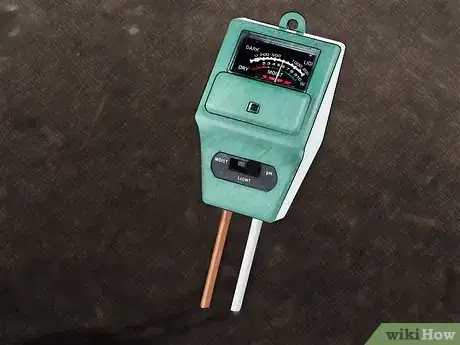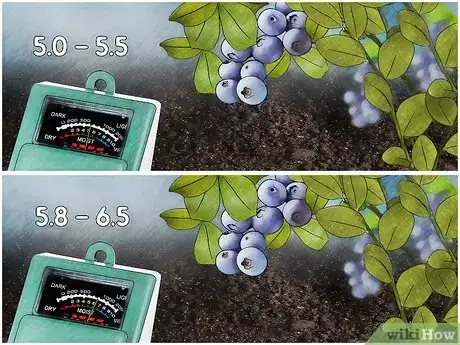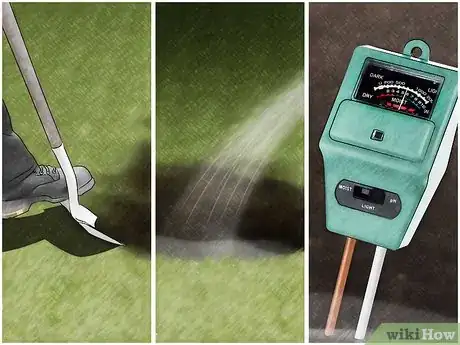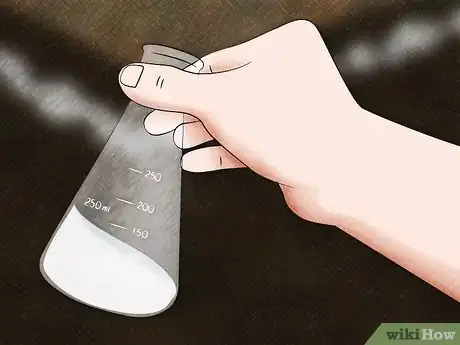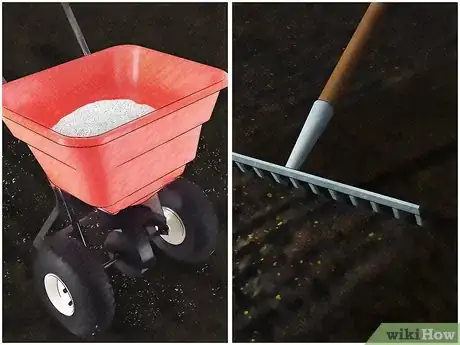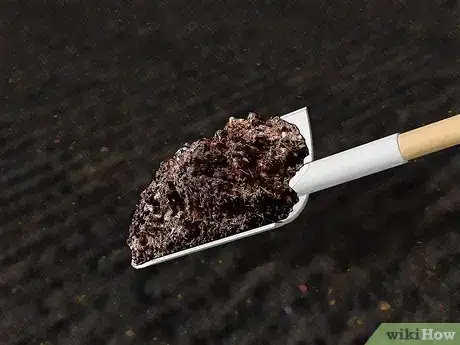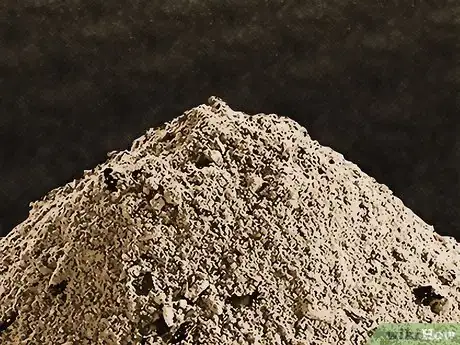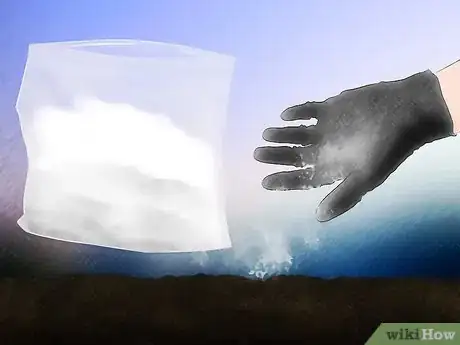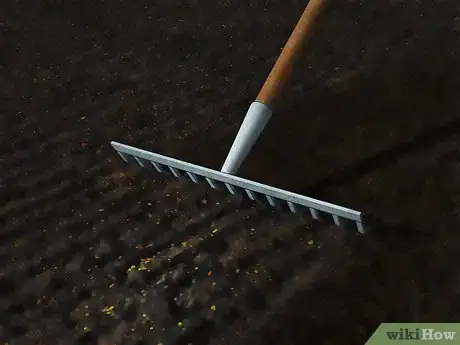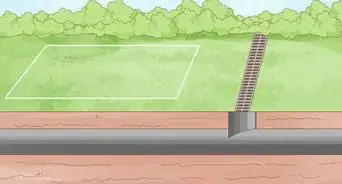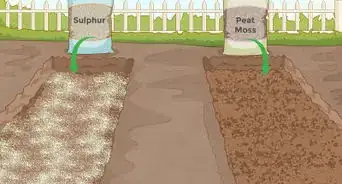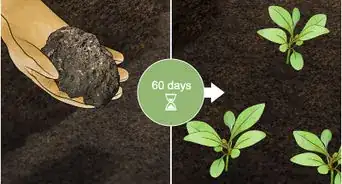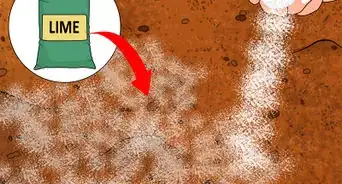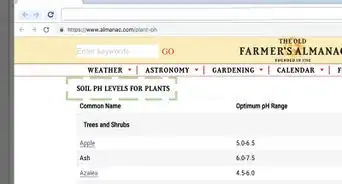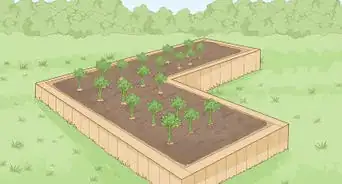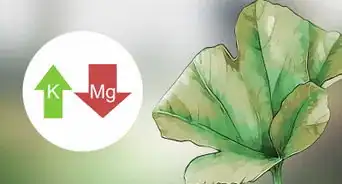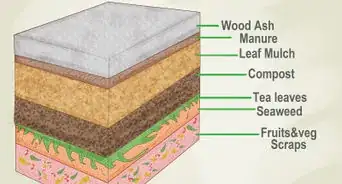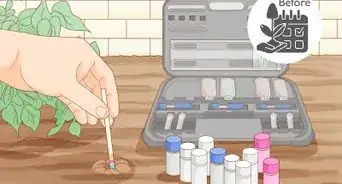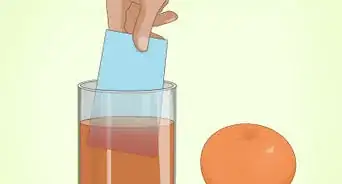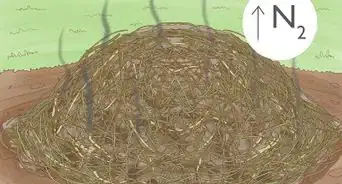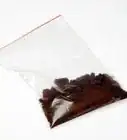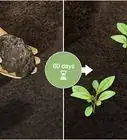This article was co-authored by Steve Masley. Steve Masley has been designing and maintaining organic vegetable gardens in the San Francisco Bay Area for over 30 years. He is an Organic Gardening Consultant and Founder of Grow-It-Organically, a website that teaches clients and students the ins and outs of organic vegetable gardening. In 2007 and 2008, Steve taught the Local Sustainable Agriculture Field Practicum at Stanford University.
There are 7 references cited in this article, which can be found at the bottom of the page.
wikiHow marks an article as reader-approved once it receives enough positive feedback. In this case, 87% of readers who voted found the article helpful, earning it our reader-approved status.
This article has been viewed 324,099 times.
Finding the right soil pH is important for the health of your plants. A proper pH determines how efficiently the plants absorb nutrients. In order to adjust your soil’s pH, you first need to determine what changes to make. If you need to increase the acidity or lower the pH, there are a number of common compounds that you can add to bring about the desired change. You can also raise the pH if you have overly acidic soil by adding a liming material or another base compound. Once you have properly evaluated your soil and applied the right material, you should have healthy and productive plants.
Steps
Evaluating Your Soil
-
1Identify your soil type. Before you test your soil or add anything to it, you will need to determine what type of soil you have. Determine if your soil is clumpy, dry, loose or wet. This will give you some clues about what altering the soil may entail. Because of this, you should understand your soil type early.[1]
- Well-drained and loose soil will be more easily altered. On the other hand, compacted soil that has a lot of clay in it will be difficult to change.
- Determining your soil type will help you figure out the best method for applying any materials to it.
-
2Understand soil pH. In order to adjust your soil’s pH, you will need to know what that is. A soil's pH represents how acidic or alkaline it is. Soil pH is determined on a scale from zero to 14, with seven being a neutral pH that is neither acidic nor alkaline. Anything over seven is alkaline and anything below seven is acidic. Most plants prefer a pH between six and seven and a half, as do earthworms and microorganisms, which help your plants.[2] [3]Advertisement
-
3Consider what you are planting. The type of plants you intend to grow will determine what your soil’s pH needs to be. Many plants prefer a more acidic soil, particularly flowers and some fruit plants like blueberries. Research what the recommended pH levels are for the plants you want to grow.[4]
- Azaleas, rhododendrons, blueberries and conifers like acidic soils (pH 5.0 to 5.5)
- Vegetables, grasses and most ornamentals prefer slightly acidic soils (pH 5.8 to 6.5)
-
4Test the soil’s pH. Once you have an understanding of soil pH and the type of soil you are dealing with, you will want to get it tested. You can buy a commercial test at a local home and garden store or send a sample to a company that will test it for you. The easiest way to test your soil is to dig a hole, fill it with water and then insert a test probe into muddy water. However, sending a soil sample to be tested will give you a more accurate indication of your soil’s pH[5]
- There are also some DIY methods that include making your own pH test strips.
-
5Have your water tested. Test your water to determine how it affects your soil. Groundwater, the water used in most homes and gardens, tends to be more alkaline. However, rainwater tends to be more acidic. If you live somewhere with lots of rainfall, your soil may be slightly more acidic. If you mostly water your garden or yard with water from a faucet, your soil may be more alkaline.[6]
- You can use commercial pH test strips or an electronic pH meter.
Increasing the pH
-
1Pick a liming material. If you have tested your soil and found that it is too acidic, you can raise the pH by adding a base. The most common materials used to increase the pH of soil are compounds made from powdered limestone, or lime, which you can find at most home and garden store. Standard lime comes in four types: pulverized, hydrated, granules and pellets. Depending on your soil type and the amount of moisture in the ground, one of these compounds may be a good option.[7]
- Pulverized lime is finely ground and more easily absorbed by the soil. However, it is more difficult to spread because it can clog the applicator.
- Granular and pelletized lime are easier to spread. However, it is not as effective at altering the soil pH.
- Hydrated lime should only be used with extremely acidic soils since it is more water-soluble and can quickly increase a soil’s pH.
- Some lime sources contain micronutrients like dolomite, which is a mixture of calcium and magnesium carbonates. However, you should only use dolomitic lime if your soil is magnesium deficient. Do not add more magnesium to soils that are already high in it.[8]
-
2Think about using wood ashes. The ash of burned trees is also quite basic and can add micronutrients like calcium, potassium, phosphate, and boron. Wood ash is not as effective as lime. However, it can dramatically increase a soil’s pH over time. Because of this, you should monitor the soil closely as you apply wood ash.[9]
- Keep the ash from coming into contact with any plant roots or germinating seedlings because it may damage them.
- Wood ash works well in sandy soil.
-
3Apply the liming source. In order to get the best results, you will want to till the liming material into the soil about two to three months before planting (usually in the fall or winter) so that there is plenty of time for the pH to change. The lime should be tilled into the soil’s the root zone or the top 7 inches (18 cm) of soil.[10]
- You can apply the lime by hand if you have a small enough piece of land. You can also use a spreader to apply liming material to a yard.
- You can use a rake or a rototiller to work the liming material into the soil.
- Because lime is not very water-soluble, tilling it into the soil will maximize its effect.
-
4Water the soil regularly. Lime will have little effect on dry soils, so you will need to apply water regularly. Water activates the lime and helps it seep into the soil. Use a garden hose or sprinkler to apply water.[11]
- How often you water the soil depends on the size of the plot of land and the amount of moisture already in the soil. Too much watering can leech other minerals out of the soil.
Decreasing the pH
-
1Use organic materials. Over time, organic matter, such as pine needles, compost or composted manure, can lower your soil’s pH. However, this can take many years and is only applicable if you have long-term gardening goals. This is a good option for organic gardening.[12]
- Organic matter is also useful for improving a soil's drainage and aeration.
- Because of the amount of organic matter used and the time needed to break it down into usable soil, this application is best for small plots.
-
2Consider applying sulfur. Another way to increase your soil’s acidity gradually is by adding sulfur. The effectiveness of sulfur depends on a number of factors, including moisture, temperature, and bacteria. Because these factors can be unpredictable, the ability of sulfur to lower a soil’s pH can take several months.[13]
- You can buy sulfur at most home and garden stores. Avoid using powdered sulfur because it is too fine for acidifying soil.
- The increase in acidity is due to a biological reaction involving bacteria.
-
3Think about adding aluminum sulfate. This compound instantly makes the soil more acidic due to a chemical reaction involving aluminum. Because of this, many amateur and small-scale gardeners prefer aluminum sulfate to organic compounds or plain sulfur. However, because it alters the pH of the soil so quickly, it can be more difficult to control the soil acidity.[14]
- You can buy aluminum sulfate at most home and garden stores.
- Because aluminum sulfate creates a chemical reaction in the ground, as opposed to a biological one, some farmers and gardeners are less inclined to use it over materials that produce acidity through a biological reaction.
-
4Till the materials into the soil. You will need to till the organic compounds, sulfur and aluminum sulfate into the soil to be effective. Organic compounds may need multiple applications depending on the soil pH. Be sure to test the soil before reapplying.[15]
- Avoid over applying the sulfur or aluminum sulfate.
-
5Rinse your plants after application. If the sulfur or aluminum sulfate gets on the leaves of your plants, you will need to rinse it off with a hose. Failure to rinse them off can result in burns to the leaves and damage to your plants. Watering your plants will also help the compounds set.[16]
Expert Q&A
Did you know you can get expert answers for this article?
Unlock expert answers by supporting wikiHow
-
QuestionIs it better to plant in raised beds, or on the ground?
 Steve MasleySteve Masley has been designing and maintaining organic vegetable gardens in the San Francisco Bay Area for over 30 years. He is an Organic Gardening Consultant and Founder of Grow-It-Organically, a website that teaches clients and students the ins and outs of organic vegetable gardening. In 2007 and 2008, Steve taught the Local Sustainable Agriculture Field Practicum at Stanford University.
Steve MasleySteve Masley has been designing and maintaining organic vegetable gardens in the San Francisco Bay Area for over 30 years. He is an Organic Gardening Consultant and Founder of Grow-It-Organically, a website that teaches clients and students the ins and outs of organic vegetable gardening. In 2007 and 2008, Steve taught the Local Sustainable Agriculture Field Practicum at Stanford University.
Home & Garden Specialist
-
QuestionOnce the pH is within the acceptable range, how long will it stay that way? Is retesting the soil necessary? If yes, how often should I do it?
 Katie GohmannKatherine Gohmann is a Professional Gardener in Texas. She has been a home gardener and professional gardener since 2008.
Katie GohmannKatherine Gohmann is a Professional Gardener in Texas. She has been a home gardener and professional gardener since 2008.
Professional Gardener
-
QuestionWhat is the best way to decrease soil pH organically?
 Katie GohmannKatherine Gohmann is a Professional Gardener in Texas. She has been a home gardener and professional gardener since 2008.
Katie GohmannKatherine Gohmann is a Professional Gardener in Texas. She has been a home gardener and professional gardener since 2008.
Professional Gardener
References
- ↑ http://vric.ucdavis.edu/pdf/Soil/ChangingpHinSoil.pdf
- ↑ http://www.clemson.edu/extension/hgic/plants/other/soils/hgic1650.html
- ↑ http://www.finegardening.com/four-things-you-need-know-about-soil-ph
- ↑ http://www.ipm.iastate.edu/ipm/hortnews/1994/4-6-1994/ph.html
- ↑ http://www.clemson.edu/extension/hgic/plants/other/soils/hgic1652.html
- ↑ http://library.state.or.us/repository/2010/201008250826323/index.pdf
- ↑ http://www.clemson.edu/extension/hgic/plants/other/soils/hgic1650.html
- ↑ http://vric.ucdavis.edu/pdf/Soil/ChangingpHinSoil.pdf
- ↑ http://www.clemson.edu/extension/hgic/plants/other/soils/hgic1650.html
- ↑ http://vric.ucdavis.edu/pdf/Soil/ChangingpHinSoil.pdf
- ↑ http://www.clemson.edu/extension/hgic/plants/other/soils/hgic1650.html
- ↑ https://www.extension.purdue.edu/extmedia/HO/HO-241-W.pdf
- ↑ http://www.clemson.edu/extension/hgic/plants/other/soils/hgic1650.html
- ↑ http://www.clemson.edu/extension/hgic/plants/other/soils/hgic1650.html
- ↑ http://www.clemson.edu/extension/hgic/plants/other/soils/hgic1650.html
- ↑ http://www.clemson.edu/extension/hgic/plants/other/soils/hgic1650.html
About This Article
To adjust your soil's pH, use pulverized lime or granulated lime to increase the pH. After applying the lime, rake it into the soil and water regularly for best results. Alternatively, apply wood ash to your soil, but bear in mind that the ash will only be effective over a longer period of time. If you need to reduce the soil's pH, apply aluminum sulphate for immediate results. You can also try using manure or compost if you want an organic solution, but keep in mind that these won't work as fast as chemical solutions. To learn how to make your own pH test strips, read on!

